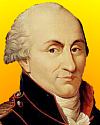
On 14 Jun 1736, Charles-Augustin de Coulomb was born, whose contributions to the measurement of electrical charge were recognized by the naming of the unit of electric charge after him.
A biography of Charles-Augustin de Coulomb in Pioneers of Electricity (1890) is very informative on the diverse interests of this remarkable scientist. Among the interesting facts you probably did not know about him was that he was sent to the prison of the Abbaye over a report on a canal!
Of course, as you would expect, his introduction of measurement to the study of electrical charge is a large part of this biography of this remarkable person - another scientist about whom you can learn some background you perhaps would never have otherwise known he studied (for example, about the sap of poplar trees!).

On 14 Jun 1946, the Scottish engineer John Logie Baird. He was the first man to televise outline pictures of objects, in 1924. The following year he screened recognizable human faces. Today's book pick is: Television And Me: The Memoirs of John Logie Baird, by John L Baird, an autobiography by this pioneering TV engineer. He writes with blunt candour and caustic wit about the wild escapades of his early business career and later troubled relationship with Lord Reith and the fledgling television broadcasts. With much new material, including a recently discovered final chapter by his wife, this heavily illustrated edition of his autobiography gives us a very human portrait of one of the creators of the modern world.
It is available from Amazon, typically about New from $15.53. Used from $3.50. (As of earlier time of writing - subject to change.)
 | The sciences are monuments devoted to the public good; each citizen owes to them a tribute proportional to his talents. While the great men, carried to the summit of the edifice, draw and put up the higher floors, the ordinary artists scattered in the lower floors, or hidden in the obscurity of the foundations, must only seek to improve what cleverer hands have created. |
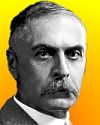 | The reactions follow a pattern, which is valid for the blood of all humans... Basically, in fact, there are four different types of human blood, the so-called blood groups. The number of the groups follows from the fact that the erythrocytes evidently contain substances (iso-agglutinogens) with two different structures, of which both may be absent, or one or both present, in the erythrocytes of a person. This alone would still not explain the reactions; the active substances of the sera, the iso-agglutinins, must also be present in a specific distribution. This is actually the case, since every serum contains those agglutinins which react with the agglutinogens not present in the cells—a remarkable phenomenon, the cause of which is not yet known for certain. |
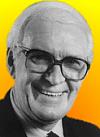 | Our brains seem to be organised to make random comparisons of the contents of our memories. Daydreaming allows the process to go into free fall. Suddenly, there is a new idea, born with intense excitement. We cannot organise this process but we can distort or even defeat it. [Commenting that creativity is not a method that can be learnt and taught.] |
| Before you look at today's web page, see if you can answer some of these questions about the events that happened on this day. Some of the names are very familiar. Others will likely stump you. Tickle your curiosity with these questions, then check your answers on today's web page. | |
| Births | |
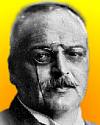 | On 14 Jun 1864, the German psychiatrist was born. The disease named after him is very well-known. In Nov 1901, a 51-year old female patient with signs of dementia had been admitted to the Frankfurt hospital where this doctor was working. At a meeting of German psychiatrists on 3 Nov 1906, he reported on this patient. The title of his lecture was Über eine eigenartige Erkrankung der Hirnrinde (On a peculiar disorder of the cerebral cortex). He described presenile dementia—a progressive, degenerative disorder that affects the brain. The first symptoms are loss of memory, inability to think and understand and gradual behaviour changes. Death follows in from 8 to 20 years. Can you name this psychiatrist? |
 | Charles-Augustin de Coulomb was born 14 Jun 1736, the French physicist who is best known for the formulation of Coulomb’s law. In 1777, he invented a torsion balance which he subsequently modified for electrical measurements. He also did research on friction of machinery, on windmills, and on the elasticity of metal and silk fibres. What is Coulomb's law? Deaths |
| Deaths | |
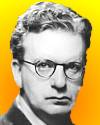 | John Logie Baird, a Scottish engineer (1888-1946), was the first man to televise outline pictures of objects (1924) and recognizable human faces (1925). In 1926, he demonstrated TV for moving objects at the Royal Institution, London. By 1928, he showed his attempt at colour television. The British Broadcasting Corporation (BBC) formed a committee in 1936 to compare his system with a competing system of Marconi Electric and Musical Industries. It was the Marconi-EMI all electronic system that the BBC adopted in Feb 1937. Baird also worked on stereoscopic television. He even recorded experimental silent moving 30-line images, which have been played back with modern technology, and posted on YouTube! What medium did Baird use to record his 30-line moving images? |
| Events | |
 | On 14 Jun 1972, a well-known insecticide was banned from use in the U.S. after 31 Dec 1972, by executive order of the Environmental Protection Agency. What insecticide was banned in 1972? |
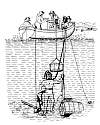 | On 14 Jun of a certain year, the first U.S. patent for a practical underwater diving suit was issued to Leonard Norcross of Dixfield, Me. Calling it a “water-dress,” he designed an airtight rubber outfit with a brass helmet connected via a rubber hose to an air pump on a boat. To reduce buoyancy, the feet were weighted with lead shot. In what decade was this patent issued? |
 | In 1892, a number of patents were issued to the same man for a variety of inventions: U.S. Nos. 476,983 to 476,993. They were for, respectively, a “Pyromagnetic Generator,” an “Expansible Pulley,” a “Trolley for Electric Railways,” a “Means for "Propelling Electric Cars,” an “Electric Locomotive,” a “Lightning-Arrester'', a “Conductor for Electric Railways,” an “Electric Meter'', a “Method of and Apparatus for Separating Ores'', an “Incandescent Electric Lamp” and an “Electric-Arc Lamp.” Can you name the inventor? |
Fast answers for the previous newsletter for June 13: Maxwell’s measurement of the speed of propagation of an electromagnetic field is approximately the same as the speed of light. • Thomas Young helped decipher the Rosetta Stone • sulphuric acid • radon • anthrax • Neptune, to became the first man-made object to leave our Solar System.
 If you enjoy this newsletter, the website, or wish to offer encouragement or ideas, please send feedback by using your mail reader Reply button.
If you enjoy this newsletter, the website, or wish to offer encouragement or ideas, please send feedback by using your mail reader Reply button. Your click on a Facebook, StumbleUpon, or other social button on the site webpages is also a welcome sign of appreciation. Thank you for using them.
© This newsletter is copyright 2020 by todayinsci.com. Please respect the Webmaster's wishes and do not put copies online of the Newsletter — or any Today in Science History webpage. (If you already have done so, please remove them. Thank you.) Offline use in education is encouraged such as a printout on a bulletin board, or projected for classroom viewing. Online, descriptive links to our pages are welcomed, as these will provide a reader with the most recent revisions, additions and/or corrections of a webpage. For any other copyright questions, please contact the Webmaster by using your mail reader Reply button.
--
If you do not want to receive any more newsletters, Unsubscribe
To update your preferences and to unsubscribe visit this link
Executive Real Estate Business Class
-
"It was like a man with wings. It wasn't like anything you'd see on TV or in a monster movie." ...
About the publisher
Search This Blog
Blog Archive
-
▼
2020
(1542)
-
▼
June
(193)
- TRAVEL: Epic America—Our photographers' picks
- On This Day for June 30 - Night of the Long Knives...
- Newsletter for Tuesday 30 June.
- We told you: Mass-Tracking COVI-PASS Immunity Pass...
- June 30: Theory of Evolution, the Night of Long Kn...
- HISTORY: And the symbols come tumbling down
- Explore the Ocean with Nat Geo Kids Magazine
- New This Week on History News Network
- On This Day for June 29 - London's Globe Theatre d...
- Newsletter for Monday 29 June.
- COVID Cartoon Night (not funny) while we weep for ...
- June 29: Shakespeare's Globe Theatre Burns Down an...
- FAMILY: Getting your kid to help others
- Henry VIII's surprising burial place | The world's...
- On This Day for June 28 - Assassination of Archduk...
- Say the wrong thing: lose visitation with your kid...
- Newsletter for Sunday 28 June.
- June 28: Franz Ferdinand Assassinated, the Treaty ...
- The Compass: Kenya
- How the Invention of A/C Changed US Politics
- On This Day for June 27 - Yen made official moneta...
- Newsletter for Saturday 27 June.
- June 27: 1st Women's Magazine, Nuclear Power Stati...
- CORONAVIRUS SPECIAL EDITION: The virus hasn't won ...
- PHOTOGRAPHY: A legendary photographer's enduring r...
- Partner: How to keep your kids learning vocab this...
- Archaeologists Say They've Just Solved The 400-Yea...
- The Roundup Top Ten From History News Network
- On This Day for June 26 - Opening of CN Tower, Bab...
- Newsletter for Friday 26 June.
- Contact Tracer warns of forced vaccinations plus R...
- June 26: Reconnaissance balloons, Kennedy's Clario...
- YOUR WEEKLY ESCAPE: A dangerous quest for hallucin...
- That Was No Bunny: Watch New Episode of Alone Tonight
- ANIMALS: Leave that elephant alone
- On This Day for June 25 - Korean War begun, Antoni...
- Newsletter for Thursday 25 June.
- June 25: 1st Female PhD, Custer's Last Stand, the ...
- SCIENCE: The heat wave in the Arctic
- Demystified: What Does "SPF" Mean?
- On This Day for June 24 - Russia invaded by Napole...
- Breaking News from History News Network
- Newsletter for Wednesday 24 June.
- June 24: Fatal Medieval Dance Manias, the Gadsden ...
- TRAVEL: Fear of flying and hotel rooms fuels RV boom
- Be at the Front Lines of History's Most Epic Battl...
- On This Day for June 23 - Battle of Bannockburn, C...
- Lowest US coronavirus deaths reported since March ...
- Newsletter for Tuesday 23 June.
- June 23: World's Oldest Parliament, the Contracept...
- Life Under The Shah: What Iran Looked Like Before ...
- HISTORY: A swift goodbye to some racist imagery (a...
- A whole year of Britannica Premium for $49.99?
- New This Week on History News Network
- On This Day for June 22 - Mutiny against Henry Hud...
- Newsletter for Monday 22 June.
- Clintons and Gates Connected at the Hip plus Cardi...
- June 22: Galileo Galilei Recants, Last Shot of the...
- FAMILY: How to keep kids safe as places reopen
- On This Day for June 21 - Japanese defenses destro...
- Newsletter for Sunday 21 June.
- June 21: 1st Governor General of India, Fermat's L...
- The Compass: Ecuador
- On This Day for June 20 - Casket Letters found, Ho...
- Newsletter for Saturday 20 June.
- CORONAVIRUS SPECIAL EDITION: Could public bathroom...
- Mandatory Vaccines coming: Bill Gates Accuses Tho...
- June 20: Attila the Hun, the University of Oxford ...
- PHOTOGRAPHY: Fatherhood 2020 — ‘Fear and courage a...
- Why is America haunted by its past?
- The Woman Who Claimed Emmett Till Wolf-Whistled At...
- This Week's Roundup Top Ten from History News Network
- Exclusive HistoryExtra podcasts | Listen now
- On This Day for June 19 - Rosenbergs executed for ...
- Newsletter for Friday 19 June.
- World Economic Forum starts The Great Reset initia...
- YOUR WEEKLY ESCAPE: How the ultimate shark photo w...
- June 19: London's Metropolitan Police and the 1st ...
- Predator Encounters. Watch New Episode of Alone To...
- ANIMALS: Finding the snow leopards
- Count on a Source You Can Trust
- On This Day for June 18 - War of 1812 begun, Sir P...
- Newsletter for Thursday 18 June.
- Lockdowns, tracing, testing, vaccinating, and Libe...
- June 18: US-British War of 1812, the Battle of Wat...
- SCIENCE: They grew fearsome. They began soft, and ...
- Demystified: How Are Sports Chosen for the Olympics?
- Breaking News from History News Network
- On This Day for June 17 - Arrest of O.J. Simpson, ...
- Newsletter for Wednesday 17 June.
- June 17: Mumtaz Mahal, the French Revolution and G...
- TRAVEL: They hurtled the world's highest point
- Explore together with Nat Geo Kids magazine
- On This Day for June 16 - First woman in space, Jo...
- Newsletter for Tuesday 16 June.
- June 16: Salvation Army Forms, Bloomsday and FDR's...
- HISTORY: Why we can’t shake COVID-19
- New This Week on History News Network
- On This Day for June 15 - Magna Carta sealed by Ki...
- Yes, they really are forcing changes to your world...
-
▼
June
(193)
-
Blogroll
-
About
HistoryFact










0 comments:
Post a Comment